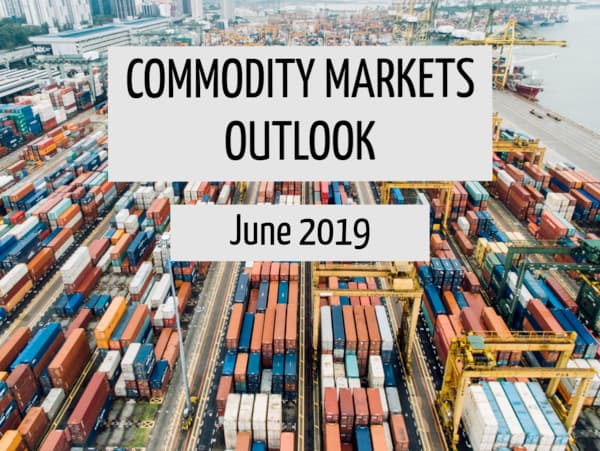
The amplitude of the economic impact of the potential tariffs threat was the main reason why de-escalation took place. The market is expecting further tariffs and that any agreement to come from the ongoing discussion will only be limited in extent. Chinese Q2 GDP numbers are likely to be worse than expected*. Even with a rather high food inflation, since June, there was a clear intention to loosen monetary policy** after continued weakness in May data. Interbank rates were ‘guided’ down. Copper price benefited from this Chinese policy easing while zinc price declined slightly on supply concerns. Investment in gold has increased strongly in June (up almost 8% on the month). The FED’s dovish pivot was triggered by negative US macro data and additional worries about the US-China trade war implied a low forward US real rate, historically supportive of precious metals.
OPEC announced an extension of its production cuts for nine months with an aggressive inventory target. Saudi appear to be aiming at getting the market in backwardation, a situation that comparatively benefits them as a producer compared to shale producers (which are usually hedging the market 12-18 months in advance). On the spot side, the decision could introduce some upside risks to Brent, with a widening of the Atlantic spread. The back-end of the curve will probably be under more pressure. It is unlikely that the extent of the cut will be sufficient to reach their inventory target, Russia doesn’t appear to be aligned to the decision. Overall the picture hasn’t really changed as the upside remains capped by the Permian basin with the decline in global marginal costs.
Volatility in the grain sector was largely attributed to very big swing of expected planted area for this year’s harvest. Corn price jumped more than 10% in the aftermath of USDA WASDE report which had a very bullish planted area (less than 90 m acres) and low yields (about 166 bu/acre). A reverse report on the 28th of June, showed nearly 92 m acres and a potential higher yield. Corn was down for the month. Wheat was more bullish as price was at a historic low at the beginning of the month and has seen demand increasing as some feedlots are switching from corn to wheat for feed. Soybean continued to be driven partly by the US-China trade tensions, although they have also been affected (less than corn) by delayed planting.
Except for precious metals, we have seen a general correction in volatility this month after April and May gains. On the equity side, the VIX is down on the month from 18.71% to 15.08% while the VSTOXX (the index of implied volatility on the Euro Stoxx 50) is down from 17.42% to 13.73%. Crude implied volatility is also down from 45% to 37% on the month for ATM calls, still relatively high compared to its 10-year average of 32%. In the agricultural sector, implied volatility is down from recent highs, with a drop from 43% to 27% for corn and from 24% to 18% for soybean for ATM calls. We have seen a very different picture in precious metals, with gold implied volatility up to 15% from its historical low of 8% for ATM calls.
Author: Four Elements Capital

